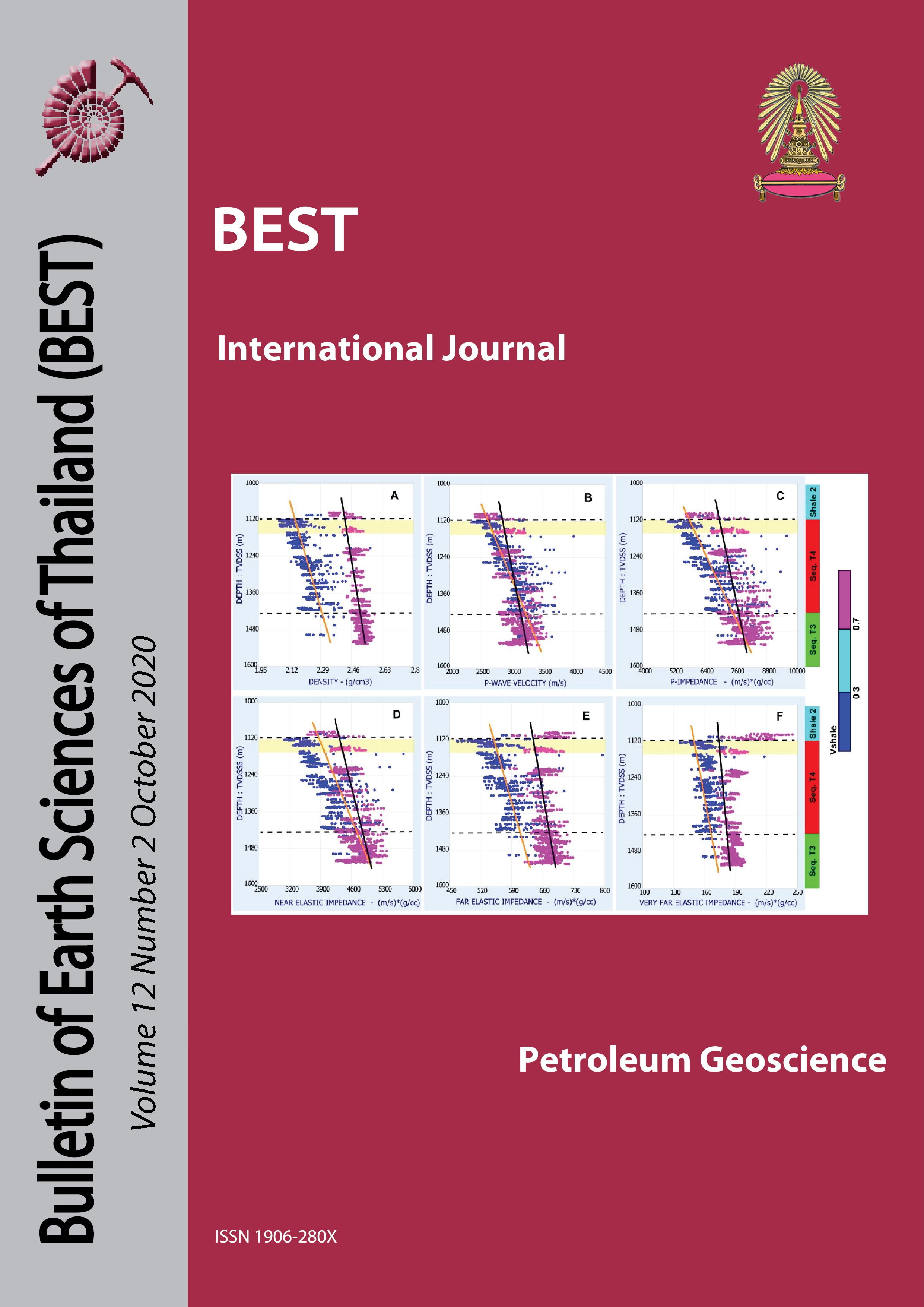Dolomitization related to fracture porosity evolution: a case study of carbonate outcrops in Nam Maholan Formation
Main Article Content
Abstract
Dolomitization and fracturing are key mechanisms of porosity and permeability enchantment in the Permian carbonates in northeastern Thailand, constituting the main reservoir for gas fields in onshore Thailand. Many dolomitization studies have been carried out, using subsurface data to understand the reservoir development and dolomite formations. However, there are few outcrop studies concerning the process of dolomitization, which is an aspect of structural relationships.
This research investigated the occurrence of dolomitization and its porosity evolution in the Nam Maholan carbonate outcrops. The structural geometry, fracture development and distribution of lithofacies were studied using data from field investigation. Porosity evolution was obtained and interpreted from petrological observation as well as integration with the literature reviews and geochemical analyses. The lithofacies are subdivided into three units consisting of a limestone unit, a partially dolomitized limestone unit and a crystalline dolomite unit. The dolomitized limestone has the highest estimation in terms of visible porosity. Based on a syncline structure lining in a NW-SE direction, the crystalline dolomite facies only occur in the hinge area. This dolomite unit is not formed in the limbs of the syncline, since the limb areas have fewer conduits (fractures and faults), compared to the hinge zone. There are two major sets of fracture orientations: 1) the NE-SW and N-S trends related to Indosinian events; 2) the ENE-WSW and NW-SE directions associated with Himalayan orogeny. In areas proximal to the hinge zone of the syncline, the non-planar saddle dolomite is dominant, while the texture is predominantly unimodal planar-e to planar-s in distal areas far away from the hinge zone. Reservoir quality is reliant on the vuggy, moldic, intercrystalline, fracture porosities. The effective porosity and vuggy cavern porosity could be enhanced by tectonic influence during Himalayan orogeny.
Article Details

This work is licensed under a Creative Commons Attribution-NonCommercial-NoDerivatives 4.0 International License.
Copyright © 2008 Department of Geology, Faculty of Science, Chulalongkorn University. Parts of an article can be photocopied or reproduced without prior written permission from the author(s), but due acknowledgments should be stated or cited accordingly.
References
Booth, J. E., Sattayarak, N. 2011. Subsurface Carboniferous-Cretaceous geology of Northeast Thailand. In Ridd, M. F., Barber, A. J., Crow, M. J. (eds.), The Geology of Thailand. The Geological Society, London, 184-222.
Kongchum, J. 2018. Fracture development in Pha Nok Khao reservoirs from outcrop integrated with FMI, Korat basin, north-east Thailand. Unpublished M.Sc thesis, The Department of Geology, Faculty of Science, Chulalongkorn University.
Promsen, P. 2016. Poroperm controls in carbonate reservoir, Sin Phu Horm Field, NE Thailand, using a combination of cutting, isotope and FMI. Unpublished M.Sc thesis, The Department of Geology, Faculty of Science, Chulalongkorn University.
Racey, A. 2011. Petroleum Geology, In Ridd, M. F., Barber, A. J. & Crow, M. J. (eds), The Geology of Thailand. The Geological Society, London, 351-392.
Ueno, K., & Charoentitirat, T. 2011, Carboniferous and Permian. In Ridd, M. F., Barber, A. J. & Crow, M. J. (eds), The Geology of Thailand. The Geological Society, London, 72-136.
Warren, J. K., Morley, C. K., Charoentitirat, T., Cartwright, I., Ampaiwan, P., Khositchaisri, P., & Yingyuen, J. 2014, Structural and Fluid Evolution of Saraburi Group Sedimentary Carbonates, Central Thailand: A Tectonically Driven Fluid System, Marine and Petroleum Geology, 55, 100-121.
Yingyuen, J. 2013. Diagenetic evolution of “Buried-Hill” carbonate reservoir analogs in outcropping Permian carbonates, Saraburi Province, Thailand. BEST, Bangkok, 6, 2, 50-62.


